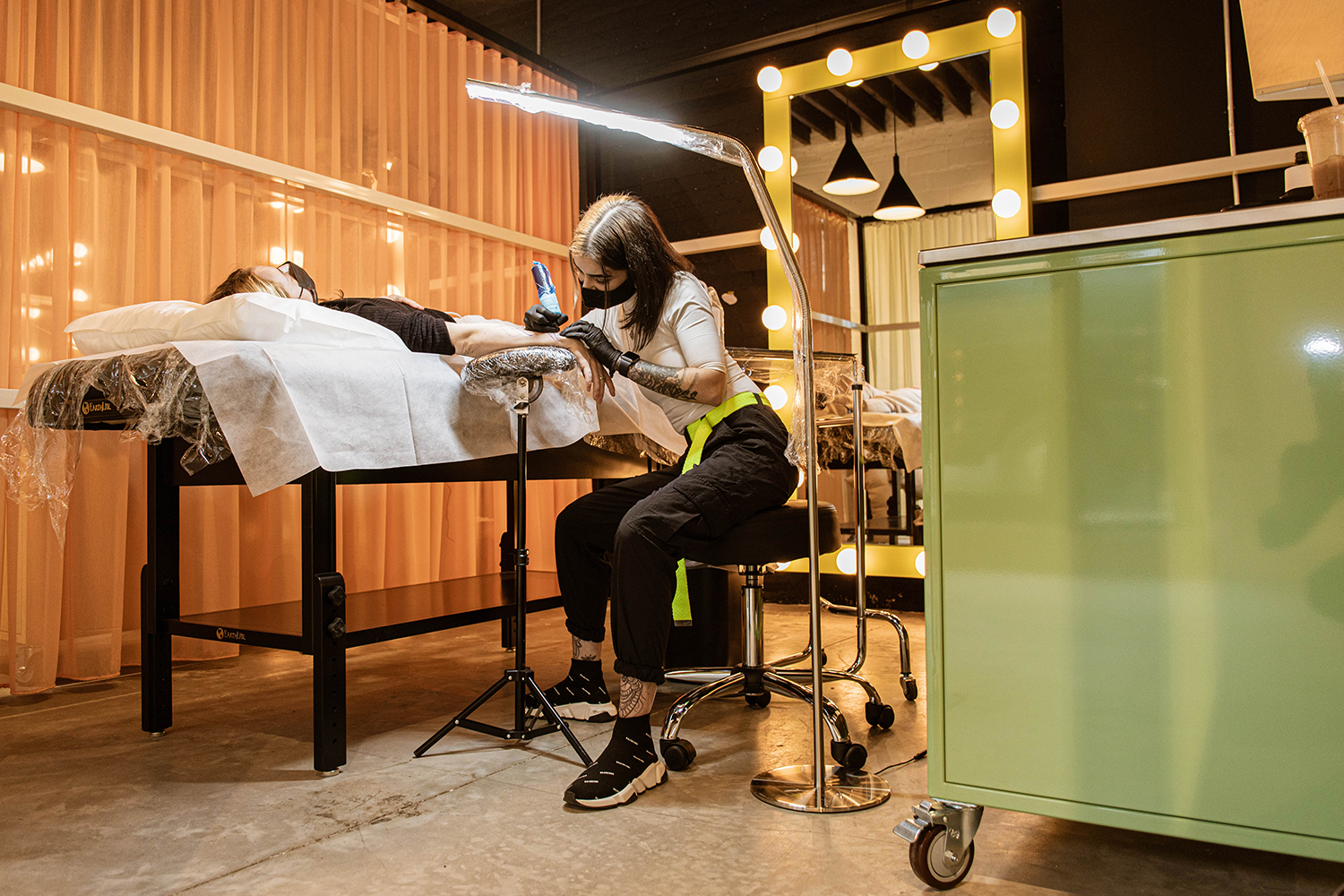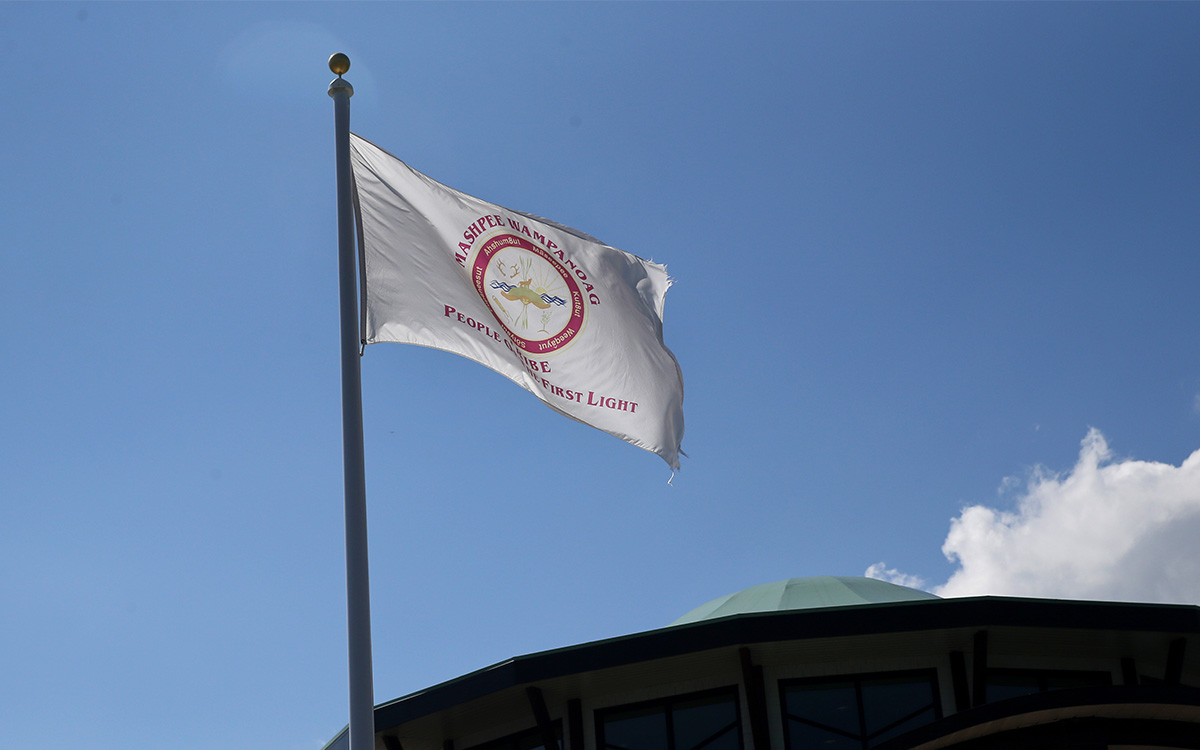Cultures around the world still honor ancient traditional practices of body modification, or the intentional and often irreversible alteration of the skin. For many practitioners, body modifications are deeply sacred rites that include stretched ears, tribal tattoos, scarification, binding and branding. Every group has its own reasons for performing them: coming-of-age ceremonies, protection against evil, spiritual meaning, social position, beauty enhancement.
In many cultures painful body modifications are reserved for women. Take Myanmar, where Chin women wear tribal facial tattoos and Kayah women wear brass coils around their necks. But some cultures reserve the practice of certain body modifications for men.
“The life paths of tribesmen and women have different markers (marriage and childbirth for women, versus becoming accepted as a warrior and leader among the men), hence the different body modifications for each. The visual symbols also create a sense of unity and shared history within the group,” says La Carmina, a widely published writer who has studied body-modification practices worldwide. “Boys take part in a ritualistic body modification that proves their ability to be brave under agonizing conditions. One element of body modification rituals is to display masculinity. Young men demonstrate that they can withstand great pain, earning the right to be leaders in the tribe.”
Crocodile Scarification in Papua New Guinea
In the remote villages of Papua New Guinea along the Sepik and Karawari Rivers, there are tribesmen who undergo the ancient tradition of crocodile scarification. “The crocodile exhibits characteristics that are often associated with masculinity: physical strength, a strong and smart hunter, and endurance,” Mary Jane Murray of Trans Niugini Tours says. “Knowledge is power in this region. Knowledge is passed along during the initiation ritual including information about clan histories, myths, and beliefs. Being in possession of this knowledge allows the initiates to become men.”
The ritual skin-cutting is a part of a coming-of-age initiation rite for tribesmen. “During the initiation, the boy’s maternal uncles are usually involved in the skin cutting. The initiate’s blood is considered his mother’s blood and shedding it lets him become a man,” Murray says.
Hundreds of cuts are made on the chest, back, and buttocks to make keloids that replicate the markings of a crocodile. Those who endure the pain of the scarification are believed to possess the strength of the prehistoric reptile. The ceremony takes place in spirit houses, called Haus Tambaran.
“Sometimes a sister will ask to be scarred while her brother’s initiation is happening because she wants to share or relieve some of her brother’s pain,” Murray says. Other family members may get a single cut on their upper arm to show respect for the family member who went through the scarification.
Lip Plates in Brazil
Traditionally, young men from some Amazonian Indigenous groups have their lips pierced as a rite of passage into manhood. The labret they wear is a sizable wooden plate placed in the piercing. Senior tribesmen with prestigious roles from the subgroups of the Kayapó tribe in Mato Grosso and Pará in northern Brazilian use lip plates, called botoque, to indicate status.

“When a Kayapó boy reaches puberty, he receives a lip piercing, which is gradually stretched with increasingly larger plugs,” La Carmina says. The hole is fully stretched by age 20 to hold a 2cm thick plate of various widths. The lip plate is intended to deter enemies and identify warriors in the tribe.
The largest disc is worn by Kayapó tribal leader, Chief Raoni Metuktire. He’s one of five elder Kayapo who still wear lip disks made of mahogany. Today, the cultural practice is losing momentum. “Young men choose not to stretch the piercing to a large circumference. However, the discs remain a symbol of pride, and a sign of masculinity,” La Carmina says.
Forehead Scarification in South Sudan
Forehead scarification is a common right of passage for men and women in Sudan across various tribal groups. The etched markings are intended to identify to which tribe the wearer belongs. The direction and number of lines distinguish the nomadic Dinka clans in South Sudan. The practice is subsiding, but tribe members who do not receive the cuts are scolded for abandoning tribal traditions for modern practices.
Dinka tribesmen go through an initiation into manhood called parapool, meaning “one who has stopped milking.” The phrase doesn’t refer to weaning off of mother’s milk; rather, in Dinka tribes, a boy’s responsibilities include milking and tethering cattle. The procedure marks the time in a boy’s life when he’s expected to take on responsibilities of men: guarding the camp from attack by hostile groups. Men are able to marry after they’ve completed the parapool.
The scarring ceremony occurs at harvest time and is conducted by a local sorcerer, who cuts lines across their forehead. The boys, usually between the ages of 10 and 16, can’t cry or show pain during the process, and recite the names of their ancestors while their skin is cut. If they move, there will be a kink in the initiation scars, which brands them a coward.
Facial Tattoos in New Zealand
The Māori in New Zealand wear facial tattoos, as the head is considered to be the most sacred part of the body. Women traditionally wear tattoos on their lips and chins, while Māori men wear tattoos of curved markings on their full faces. “Men tend to have a full-face tattoo with manawa lines that accentuate the lines on their skin, as well as decorative infill patterns that tell the story of the individual (such as their family background, accomplishments or marital status). These abstract designs may look like zig-zags, swirls or scales, and each represents a virtue such as courage or talent,” La Carmina says. In addition, men often wear the ritualistic body art on their arms, thighs and buttocks.
The origins of the word “tattoo” can be traced back to the Pacfic, as the Polynesian word tatau means “to mark.” Māori body art is known as moko, which is a visual language. The facial tattoos are called tā moko and body tattoos are called purhoro.

Moko are traditionally applied with uhi chisels dipped in ink, which leaves a raised marking on the skin. No two moko are alike. The tattoos provide information about the wearer’s societal status, tribal membership and family heritage. Various patterns have a particular meaning. Unaunahi is fish scales representing abundance and health, while ahu ahu mataroa is a ladder-like marking representing athleticism.
Local folklore says that the origin of moko comes from uetonga, the underworld. According to the legend, Mataora, a young warrior whose name means the face of vitality, fell in love with Niwareka, the princess of the underworld. When the princess came to Earth to marry Mataora, he was an awful husband, so she returned to the depths of the underworld. Mataora felt guilty about mistreating his wife and followed her to the underworld, where her relatives put paint on his face. He ultimately won back his estranged wife. Her father taught him the art of ta moko and the couple returned to Earth, bringing the tattoo practice to the tribal people. Māori people believe that their tattoos display their mana (life force).
For more travel news, tips and inspo, sign up for InsideHook's weekly travel newsletter, The Journey.





















